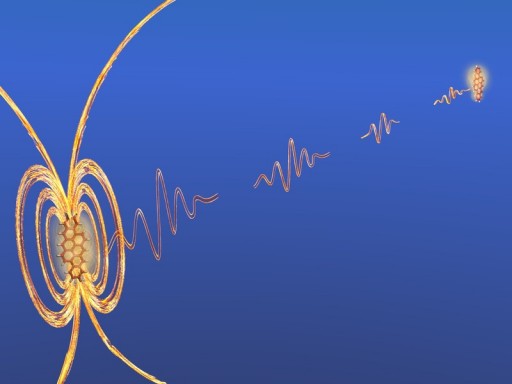Transmitting single photons between molecules for quantum communication
March 12, 2012
Scientists at the ETH Zurich and the Max Planck Institute for the Science of Light have used two molecules as antennas and transmitted signals in the form of single photons from one to the other.
A transmission via individual photons would be ideal for various applications in quantum communication — in quantum cryptography or in a quantum computer, for example.
Individual particles of light are the means of choice to transmit quantum bits (qubits). In quantum cryptography, single photons are already being used as information carriers which cannot be intercepted without this being noticed — in banking data exchange, for example.
A single photon is almost as invisible to a molecule as it is to the human eye. So until now, physicists trapped atoms or molecules between two tiny mirrors, between which the single light particles were reflected innumerable times. This method significantly increases the probability that the atom notices the photon. To do this without mirrors and thus bring about a direct interaction between a photon and a molecule, Vahid Sandoghdar and his team of physicists had to use a few experimental tricks.
First, the researchers embedded dibenzanthanthrene (DBATT) dye molecules into layers of other organic molecules. They then positioned two such layers doped with dye molecules a few meters apart and linked them with a fibre-optic cable.
The next step was to select one molecule suitable for communication from each of the two layers. “This means that the transmitting molecule has to emit photons of exactly the same color as the receiving molecule can absorb,” explains Professor Stephan Götzinger, the University of Erlangen.
They also reduced collisions by cooling the samples down to minus 272 degrees Celsius, i.e. almost to absolute zero.
They then converted one of the two molecules into a source of single photons by irradiating it with a laser. The molecular antenna now transmitted a stream of single photons. The scientists focused this stream of photons with a very good lens and guided it through the glass fiber. The weak flashes of light subsequently passed through a lens again at the other end.
The receiver molecule scatters three percent of the photons transmitted in the quantum communication. The scattering process delays the wave train of the light. This delay can be used as information. “This could be very useful for processing quantum information,” says Sandoghdar.
His team would like to turn the one-way radio communication into a real exchange. “We want to bounce a photon to and fro several times between two molecules,” he explains. This would interlink the properties of the molecules and the exchanged photons very firmly: they would be entangled.
Such entangled systems are useful for data exchange in the quantum computer or via quantum encrypted connections, because every partner in the entangled system contains information about the other partners.
